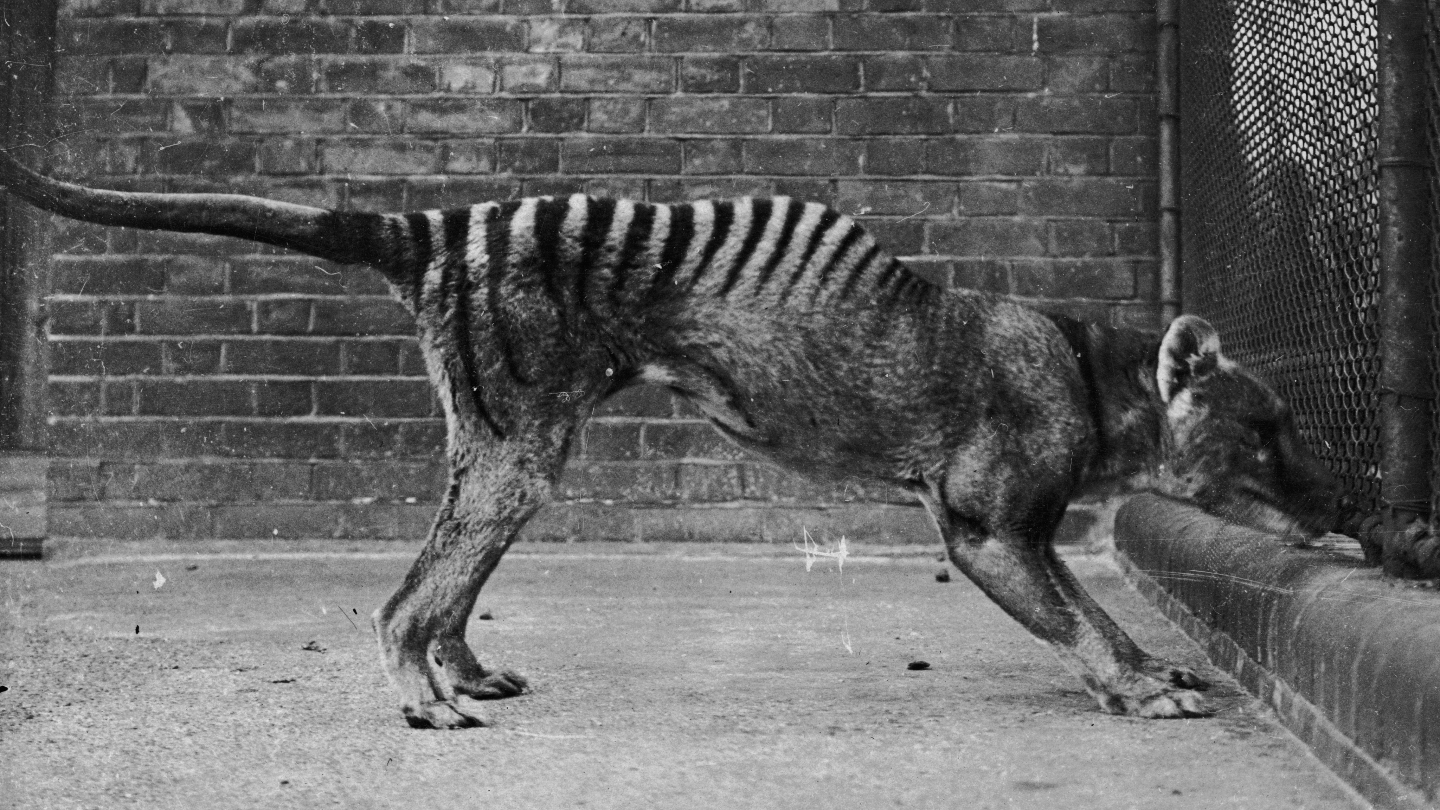The Tasmanian tiger species was hunted to endangerment after being labeled as a pest. In 1936 the species was declared extinct as the las Tasmanian tiger had died. In 2020, Mármol-Sánchez and colleagues saw the 130 year old desiccated Tasmanian tiger and used it to obtain skin and muscle samples. For the first time, an RNA sequence has been extracted from the cells of an extinct species. This was done by grinding up the samples and adding chemicals that isolate nucleotides. Then the nucleotides were processed by a computer algorithm and compared to the sequences of thousands of different species. Although there was some contamination from humans, around 70% of the RNA is suspected to be from the Tasmanian tiger. The scientists were then able to observe how the RNA sample had different protein-coding nucleotides from the skin and muscle sample. Researchers are hoping to bring the Tasmanian tiger out of extinction by modifying the genes of a closely related species. Researches are beginning to study the RNA of other extinct animals to hopefully find out where RNA viruses originate from.
I am very amazed that the RNA of an animal was able to remain intact for around 130 years without being frozen or preserved. RNA is more fragile compared to DNA, but this case hopefully implies that an RNA sample of other extinct species can be tested. Using the RNA to find the causes of viruses could be extremely helpful, as using the sequences could help humans make better medications against the viruses and possibly prevent it from spreading. I personally am unsure how reviving an extinct species would turn out. Everything is evolving and different from the nineteenth century, so it is not known if the Tasmanian tigers could live in the wild or if they would thrive.
Sites:

No comments:
Post a Comment